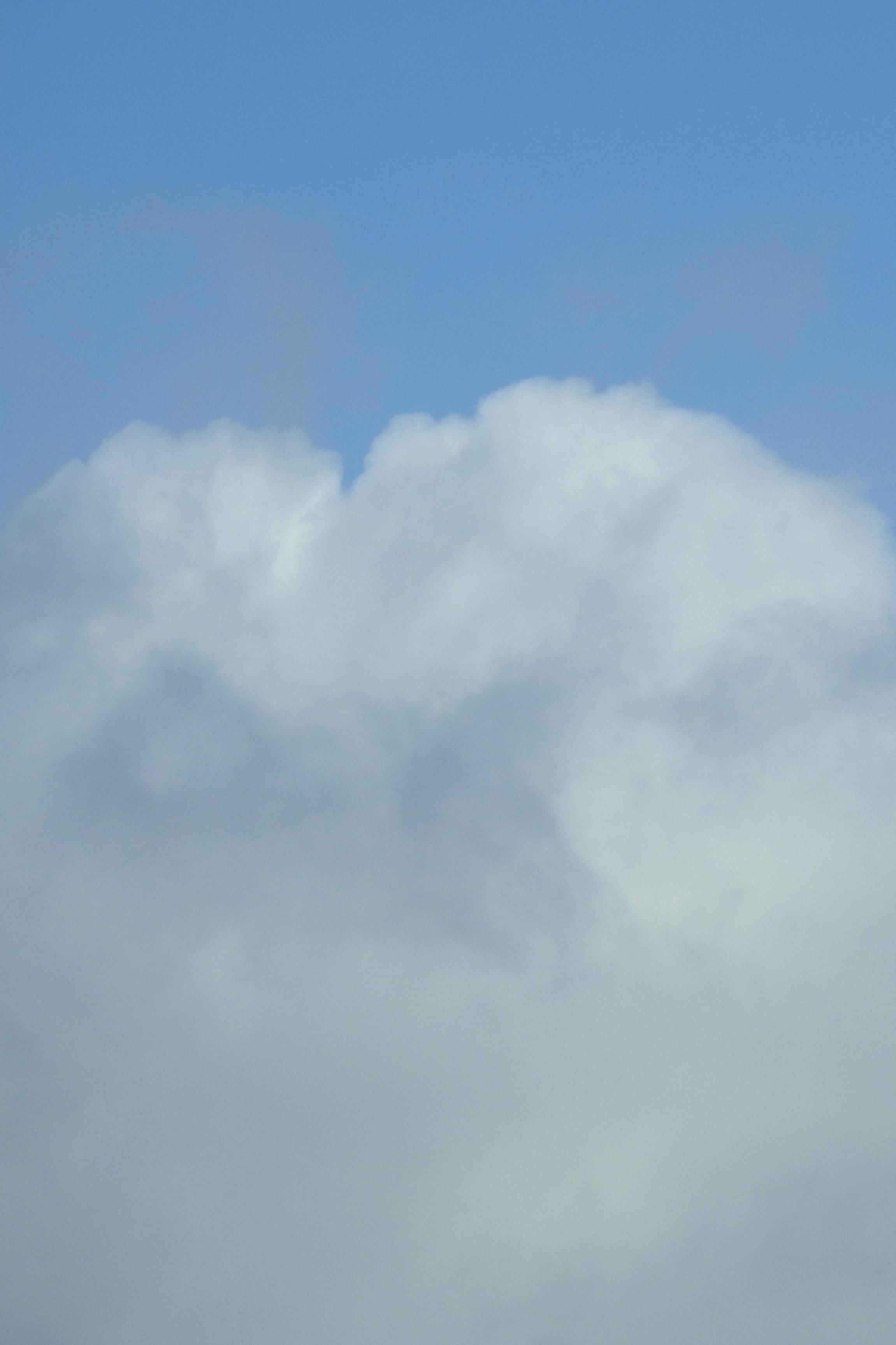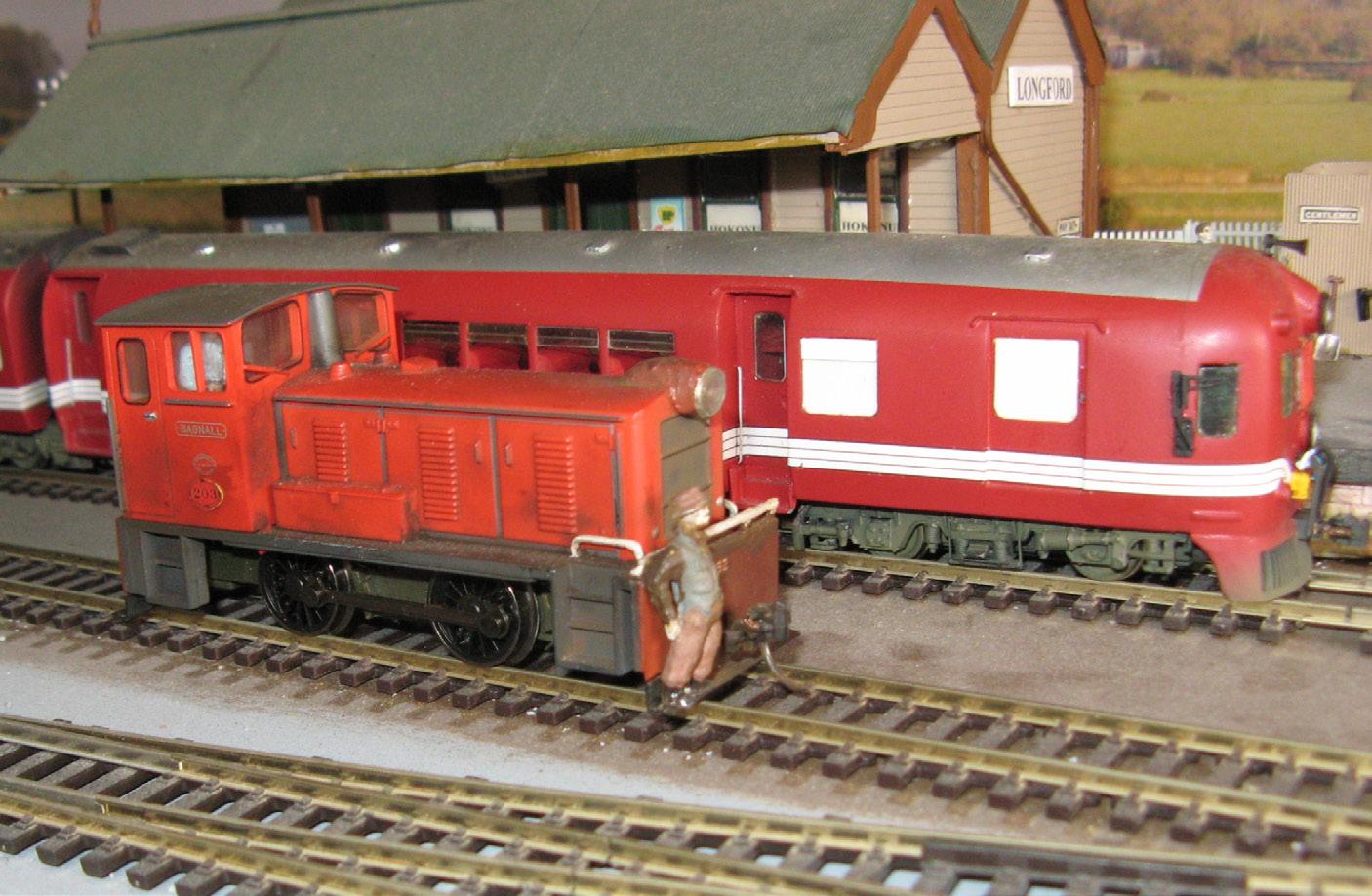
40 minute read
A TALE OF TWO
A Tale of Two Diesels Easy off the shelf locomotive conversions for modellers of New Zealand Railways.
Adrian Howard
I was recently musing over the relative dimensions and overall look of two 1:76 scale diesel locos, the Hornby Railroad 0-4-0 Bagnall shunter, and the Heljan BR Class 05 0-6-0 shunter. My interest was that both locos in a smaller scale (but based on a broader gauge than NZR) could be adapted to suit NZR 1:64 which uses the same track. The Bagnall always looked too tall for OO gauge, and when placed alongside the Drewry Railcar, as in the photos, it did not seem out of place. I had always liked the look of the Hunslet shunter, with its distinctive shaped cab roof, and the rear overhang, but especially the chunky Hunslet nameplate above the equally chunky vertical bar grill (sadly these features were removed when the NZR Hunslets were re-engined). The Hunslets were South Island locos and I recall them, especially I think it was Dsa 250 working in the Gore area in the early 60s. I liked the look, and wanted to have a model version. Then along came the Heljan 05 with a variety of liveries and eras. I bought a standard green livery with the grill in red and the Hunslet nameplate also with a red background. With both locos, there was some minor surgery required, to remove the tensionlock couplers and replace with Kaydee couplers (although the Hunslet has retained one tension-lock to be used as a transition loco for some of the mixed stock I have). The British buffers had to be removed, holes filled and sanded and running boards front and rear constructed out of brass. The Hunslet required a chimney, and both required maker’s plates, and number plates which I purchased from Trackgang Products. The numbers are for Ds locos, but they are both different numbers for each loco, and you only notice when you look really closely (and I mean really closely). I am not a rivet counter, but I like to create something that is a passable option, and I think I have done that.Both locos were given a coat of NZR red, with the cab roof in silver, and then weathered. The under-frame was weathered, and the driving rods were ‘rusted’ to take that newness away. Lights front and rear were added, a driver installed, and a shunter added to the front footplate of each loco. Both locos are superb runners, at both low speed, and at pace. Both locos were a relatively quick conversion option, and I am pleased with the decision. The initial fear of slicing in to a perfectly good proprietary loco quickly disappeared, and after surgery I now have a couple of useful shunters. I recommend a similar process to anyone wishing to create something for their own layout when alternative RTR options or kits, especially for the Hunslet don’t exist in 1:64. Adrian’s NZR Ds Shunting locomotive in 1:64 scale, converted from a OO scale Hornby Bagnall locomotive.
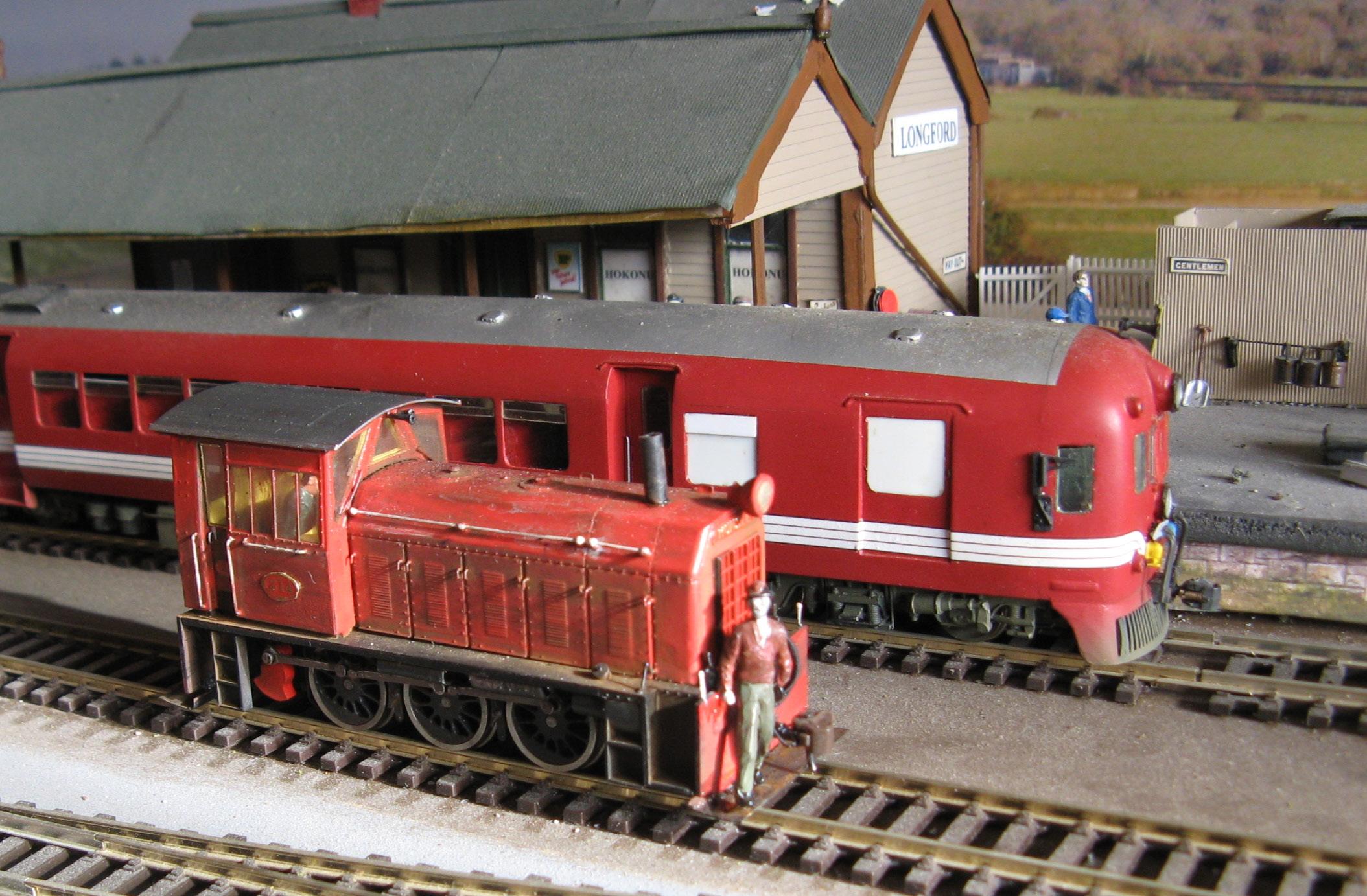
The S Scale (1:64) Hunslet. Adrian’s conversion from an Heljan BR Class 05 0-6-0 model locomotive.
Since my last report we have continued with the enhancement and expansion of the South Dock range. This has seen South Dock re-introduce the Trackside 1:64 scale range of Wagons that have been out of circulation for some time. The first model completed was the Mcp Road/Rail Petrol Wagon. This nice 2 axle wagon had 3 x 600-gallon Petrol tanks that were demountable for road transport. Rodger Cullen reports on improvements to the Southdock range of Tank Wagons, revived from the original Trackside kits. Photos: Top to Bottom Mcp Road/Rail Petrol Wagon. (Prototype photo) a modified Mc wagon that had 3 x 600-gallon Petrol tanks that were demountable for road transport. Ubs2. These were converted from Ub flat wagons and fitted with a single tank for transporting Sulphuric Acid. Uc Bitumen Tank Wagon were distinguishable by their four ventilation stacks and heating apparatus to keep the bitumen warm and fluid for pumping to road tankers. Uc18 Bulk Rail Tank Wagon with BP (British Petroleum) and safety signage.

Following closely on the heals of the Mcp has been the reintroduction of the Ubs Sulphuric Acid tank Wagons in both single tank Ubs2 and double tank Ubs1 versions. Both these Sulphuric Acid transportation wagons were converted from Ub class stock. Once I had the Ubs completed it was time to work on some other bulk tank wagons and the Uc Bitumen Tank Wagon was it. One of my favourite wagons due to its unusual venting stacks. I had a request for a Uc18 Bulk Rail Tank Wagon while visiting the Manawatu Rail-X Show in Palmerston North, so once I returned home that was the next project. The Uc18 has a big tank length at 11.800m long with a capacity over 37000 litres. This looks fantastic in model form especially with having no wagon deck allowing it to show the underframe detail. The next wagons I have been working on at the time of writing this report are the Yc and Yf Steel ballast wagons. Both these are on target to be completed by the Christchurch Big Model Train Show in October. New instructions need to be written for all these wagons and that will come, but in the meantime, getting the models back out in the market will only serve to encourage new and existing modellers to continue in this great hobby.
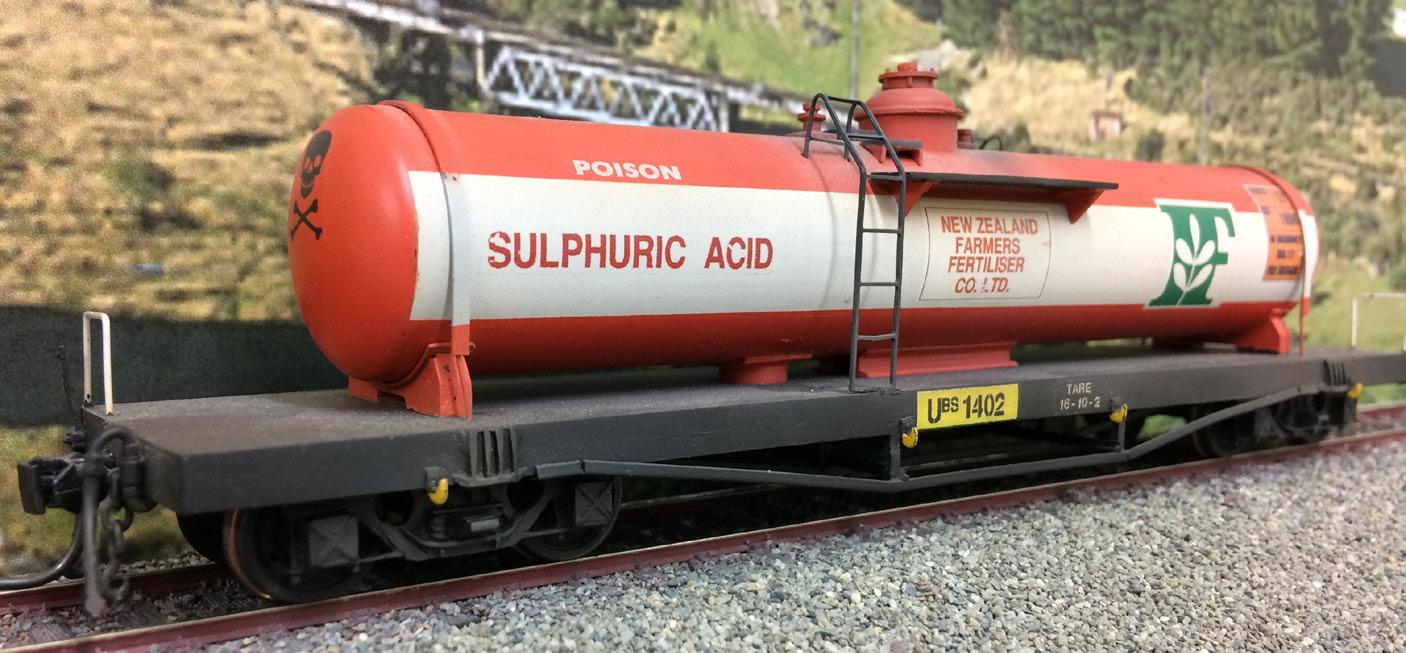


Rodger Cullen
Kato Power Bogie Peter Ross reports. When Grant Morrell came across this Kato 1-310D1 EF510 power bogie for sale on the internet he thought, ‘let’s get one and see what it's like’. It took two months to arrive, and Grant has yet to try it out or find a use for it but it looks interesting, and the Kato brand is usually of impeccable quality.
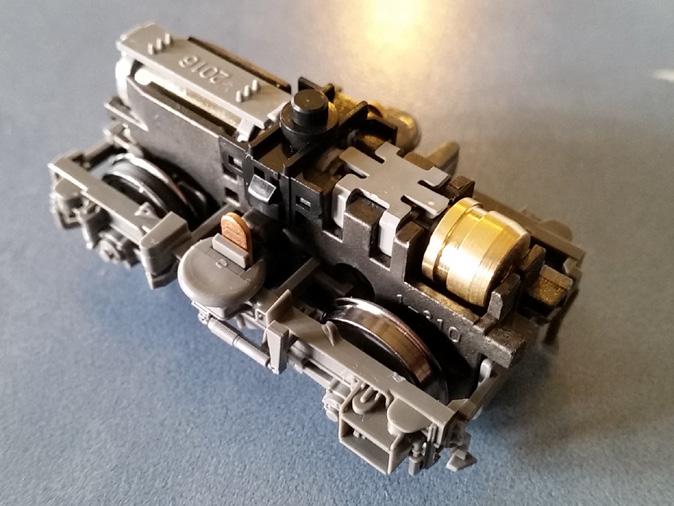
Geared Motors Graham Dredge reports Ideal for animation work a range of reasonably priced geared motors are available from EBay and other Chinese web shops. Grant Morrell and I have used various ones over the last few years, (see Grant’s crane article in the June 2018 issue of the Journal).

The bogie is HO gauge with 32mm axle centres and 11.5mm wheels, and looks like it’s meant for a multiple unit or railcar. However a couple of hours digging out plans yielded no exact matches to anything NZR in 1:64 scale. The wheels would be too small and the only close matches I could find to those axle centres were the Sentinel Cammel steam railcar and the Drewry 0-4-0 Tr rail tractor, both at 33.3mm centres. Grant is thinking of removing the side frames and maybe fitting drive chains as per his Gamman & Co logging railcar. If you have some ideas, maybe you could write in to let others know?
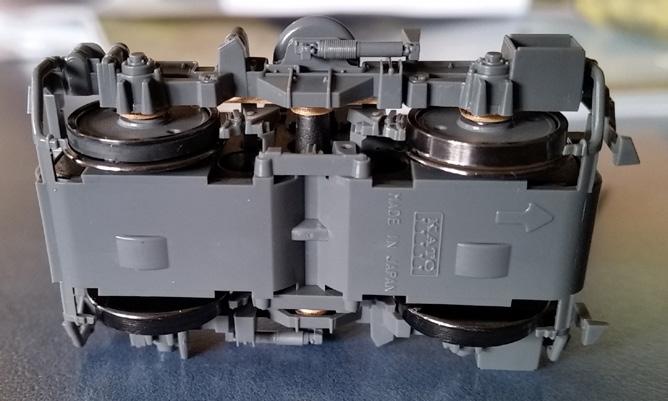
Motors available range from 6V at 30 rpm, and 12V at 100rpm up to 2000rpm. The motor profile is 10 x 12 mm and the length 26 mm over motor and gearbox. The 3 mm shaft is 10 mm long has a flat on one edge (D shaped profile). Mounting brackets are also available and are useful where you want to screw the geared motor to a base, and also provide protection from dust ingress into the gearbox. Search Ebay for N20 geared motor.
Protractors and Rulers
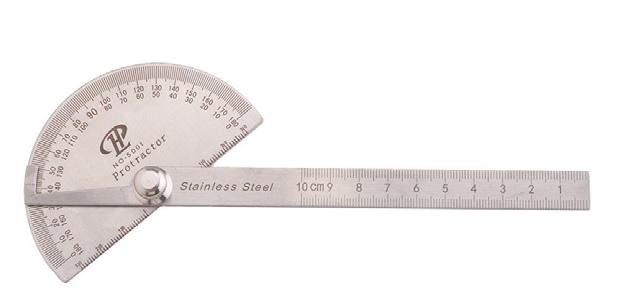
I decided to look them up the price is less than NZ$4 post free. While searching Ebay I also came across these less than $2 rulers, very cheap, but do they bend as shown in the photo?
Bad buy Recently while searching the web I found some 1:64 scale Citroen L15 model cars on Alliexpress. Also shown was the size 7.5 cm long, however the manufacturer’s name was not shown. A Wiki check revealed the scale length correct at 1:64 scale so a few days later I ordered eight of them, one for me and seven for my fellow Westies who wanted them as well. They arrived a couple of weeks later, and each car came in a Shuku branded box and they were a nice model. However they just looked way too big, so I compared one with the known 1:64th cars on my layout and visually confirmed this. I then measured the Shuku model and found it is 8.5 cm long, about 1:55 scale, not good. I raised a Alliexpress dispute and managed to get a 30% refund, how long this will take to appear in my bank account is an unknown at the time of writing. They say once bitten twice shy, me twice bitten thrice shy. Anyone want some larger than 1:64 scale cars?
Grant’s bogie cost him $34 plus $16 shipping, while Google offers several sources at varying prices, try eBay or www.1999. co.jp/eng/10186721. Don Wills recently purchased some stainless steel protractors on Ebay, and says “I have used mine a few times now and it is very handy. Chinesium but at a huge cost differential to the Micro Mark ones.”
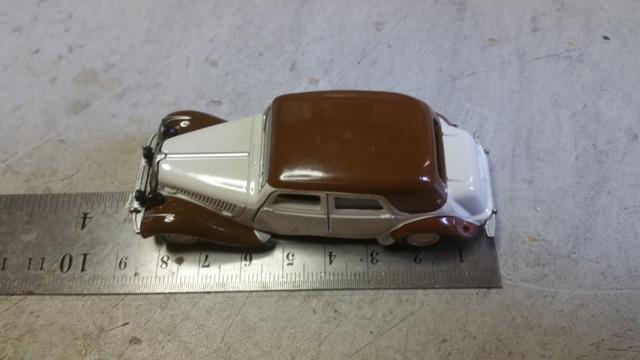
The July meeting of the Wellington group was at David Bewick’s 1:64 NZR layout, where Mark Andrews carried out further tests with his Josephine Double Fairlie. The gradient and curvature of the double track spiral proved ideal for the purpose. Drive belts of a different size resulted in unexpected better running and added weight to the bogie ends improved tracking. Engines and rolling stock intended for running at the 7-8 July 2018 Palmerston North RailEx were also given test runs to resolve problems before the show. The August meeting was at the Hutt Valley MRC clubrooms at Moera. Paul Napier demonstrated hand-making of O-scale coconut trees for his model of an RNZAF airfield in the Pacific during WW2. A captured Japanese navy 2 foot gauge construction railway runs around the perimeter. Mark and Michael measured up parts required for Wairarapa railcars (1:64 and 1:120), including cowcatchers, flywheels, and running wheels. We also examined 1:48 scale Josephine parts for a South Island customer. Great conversations were enjoyed by all on topics of mutual interest.
The Wellington NZR modellers group meets on the first Tuesday of each month. Contact Mark Andrews on 04-979 9176 for details.

Left. The Wairarapa railcar body shell is available on Shapeways in NZ120 (1:120 scale). Search under "NZR Wairarapa Railcar" in Shapeways.com. Mark (of Marks Model Works) and Michael are still working on a cowcatcher and mechanism for the 1:120 version. Mark is just beginning preliminary designs for a chassis and mechanism for the 1:64 version. Once this is done, additional pieces can be added to the interior of the body to attach the chassis to. Once this is done, the 1:64 version body is intended to be made available for sale, together with a powered chassis.
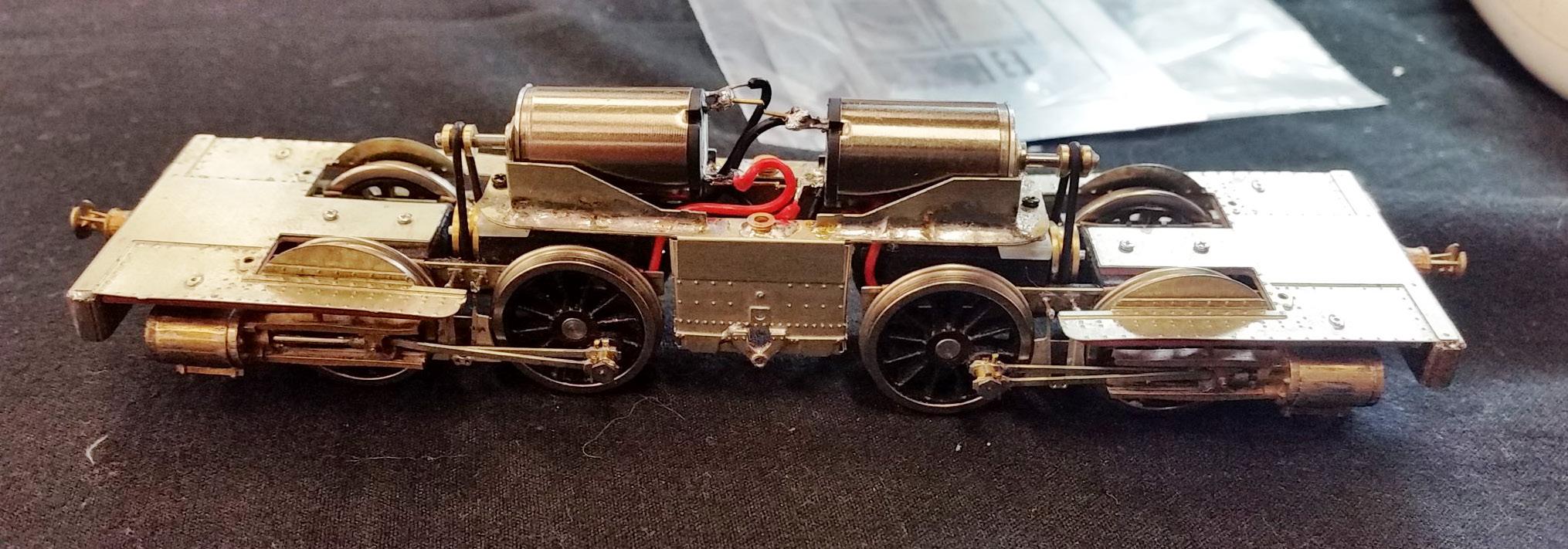
Mark Andrews new chassis for the Double Fairlie with twin motors and redesigned belt drives. Silent and smooth, and the belts are easy to replace if they accidently drop off the pulleys.
Introducing simple hints and tips for the readers. If you have a simple tip email Graham at nzmrj_editor@xtra.co.nz with a few notes and a photograph or two.
Tender Draw Bars. Graham Dredge Annoyed at the locomotive and tender coming apart whilst removing a locomotive from the track? Recently I was asked to repair a J loco that been causing problems, faltering as it ran around the owners layout. The problem I found to be a very hard to trace intermittent short circuit and after a lot of time investigating the cause I applied a simple technique to the locomotive to help prevent this occurring again. I use this technique on all my tender locomotives and it saves a lot of time and anguish when removing or placing the locomotives off and on the rails.

Coreless Can Motors. Mark Andrews of MMW, is using and supplying small coreless motors in his kits and advises that coreless motors run well on DC. However when using DCC decoders the motor drive frequency must be set at 20 KHz or higher. A couple of years ago I tested the output of a small range of DCC decoders and although most decoder manufacturers state they run at high frequency the motor drive methods vary considerably some pulsing the high frequency on and off at much lower frequencies, such as 60 Hz. I came to the conclusion that I would avoid commonly available US supplied decoders (Digitrax and TCS decoders tested) as they could cause coreless motor overheating and poor running. This may be because the US manufacturers have very little, if any, experience with coreless motors and have adopted “silent drive” high frequencies because it is a common way to reduce motor buzzing noises that was common in early DCC decoders, and is it now easier to implement from an electronics point of view than it was a decade or so ago. ESU LOK decoders are OK and can be set for 20 or 30 KHz. Because coreless motors are very common in Europe, decoders from European decoder suppliers should be OK, and would be my preference if using coreless motors.
Above: Removing the locomotive from the track caused the light wires to come adrift and they were sticking out all over the place; this had caused the small circuit board under the cab floor (top right) to come adrift and short to the live chassis, which destroyed a function output on the ESU sound decoder.
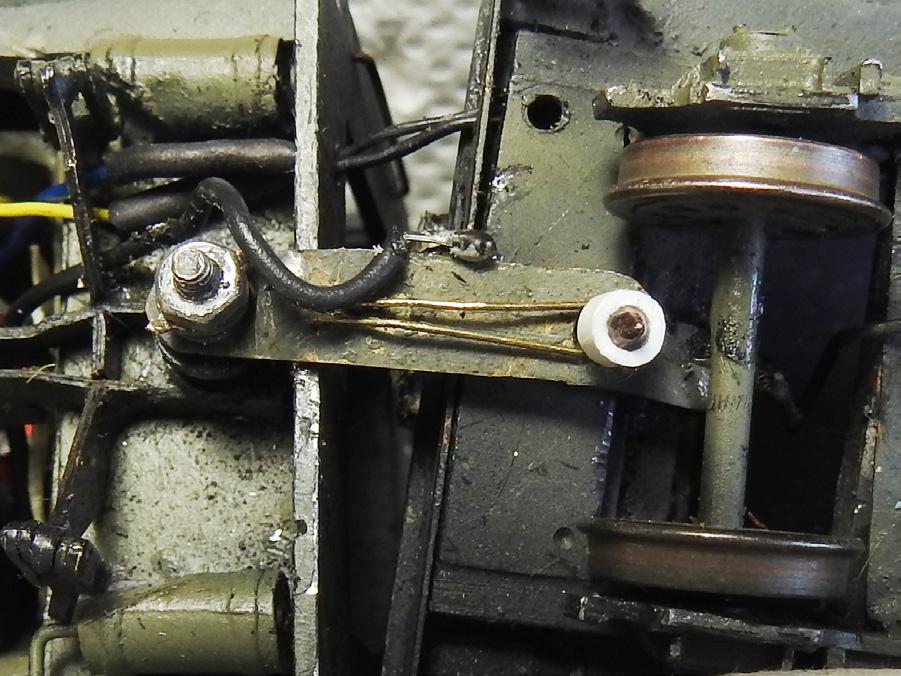
Right: The simple solution is to fit a 3 mm length of 1/8th inch plastic tube (Evergreen #224) over the tender pin commonly used on the locomotives. The tubing is a tight press fit and shown in its raw white state. Later I coloured it black with a permanent marker. Note the tidier wiring using heat shrink.
2019 NEW ZEALAND RAIL SCENE Wall Calendar. For the 10th year, MAJIK VIDEO SYSTEMS and Blackfish Media have produced the 2019 NEW ZEALAND RAIL SCENE Wall Calendar featuring twelve of Janet Weir’s images of KiwiRail services and main line heritage excursions. The calendar also includes a complimentary 60 minute DVD showcasing items that compliment Janet’s images. The calendar retails for $24.99 each plus $3.00 p&p within New Zealand, $34.00 to Australia and $42 to other countries. Contact lindsay@majikvideo.com
RES 60th ANNIVERSARY DVD. MAJIK VIDEO SYSTEMS in conjunction with the Railway Enthusiasts’ Society, has produced a 90 minute DVD to celebrate the Society’s 60th Anniversary. It covers the many excursions that the RES have run since 1958. From the movie cameras of Dawson Wilkinson, Bob Mann, John Wallers, Warren Stirling, Cran Julian and Ross Crook, their historical colour footage covers the 50th Anniversary of the NIMT held in Taumarunui, the Kaihu Valley Railway featuring old-style Ww 556, the 1958/59 Otago/Southland Rail Tour with the South Island Signals Train that travelled over the Waimea Plains Railway, Kingston, Mossburn, Wyndham and Tuatapere branch lines. The RES journeyed to a large number of destinations including the Portland Cement Works, the Whakatane Board Mill’s lines, the NIMT including the Raetihi branch and Ellis and Burnand’s Ongarue tramway. There is rare footage of Ab 832 recreating the ‘Taranaki Flyer’ in 1962 and the triple-headed North British Ja’s excursion from Auckland to Hamilton. NZR modellers will find the archive footage valuable in recreating the 1950’s/60’s infrastructure, wagons and carriages, station layouts, locomotives, etc. The DVD also features more recent excursions from 1986 when video cameras became
affordable to record the many excursions the RES organised when heritage steam was permitted to run on NZR rails. The DVD retails for $25.00 each plus $5.50 p&p within New Zealand. Overseas orders welcome. Contact lindsay@majikvideo.com
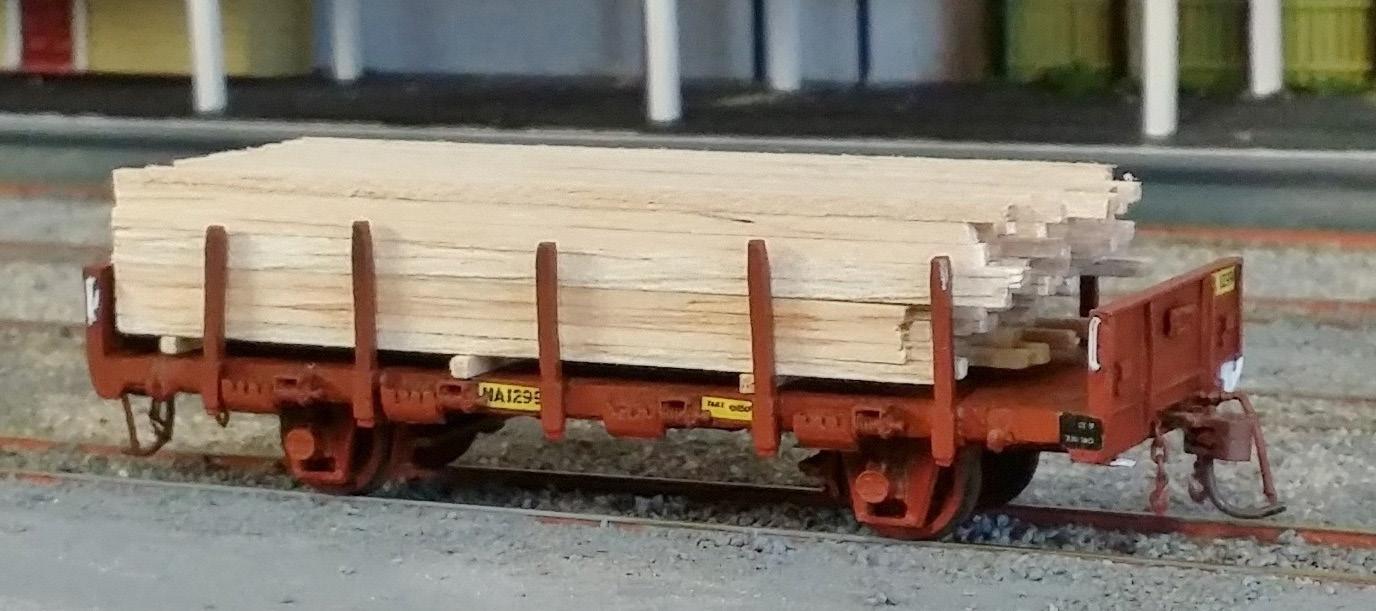
Woodsworks. News from Paul Woods As some of you may already know, I have suffered from serious back problems for many years, thanks to the permanent effects of a car accident a long time ago. Recently it became apparent that I was struggling to supply my customers in any reasonable time frame, so I have decided to park Woodsworks while I regroup and seek ways to work around the issues. I continue to hold stocks of Microengineering products such as rail, spikes, flextrak, turnouts, bridge kits etc., and some solder. Unfortunately the physical effort involved in machining timber means that I cannot supply wood strip for the time being, at least until I can build a power feed machine for my saw bench.

Na (top) & Nh Wagon (bottom) Kits. (Photos are built up kits) Darryl Palmer of Station Road has put together another production run of Na and Nh flat wagons in 1/64th scale. Price is still $45 per kit, including wheels, bearings and decals, but not couplers. See the Station Road advertisement on page 47 for contact details.
Baldwin NZR “T” class kits. (right) From Railmaster Exports John and Doreen Agnew advise that they will be abroad until 27 September, at which time we will reduce our few remaining Baldwin NZR “T” class 2-8-0 kits from $699 to just $629 for a week only, this kiwi sale thus ending on 5 October. These kits include enough parts to enable the loco to be assembled as imported in its 1879 guise (Top) with short smoke-box etc, or in its late 1890’s version (Bottom) with longer smoke-box etc. We will have the laptop with us abroad so first in first served. Contact John via email john@railmaster. co.nz

Below: John Agnew of Railmaster Exports has recently had a couple of his USA 3’ gauge 2-6-0 Sn3 Kits converted by North Yard to run on the 3’ 6” gauge for a customer in Norway, the first country to adopt the 3’ 6” gauge. We of course then followed suit.


New Zealand Railway Motive Power by David Parsons

Reviewed Pete Van Grinsven
This is an update of David’s 2002 book describing the non-steam motive power that has run on NZ rails. It follows the model of the previous book with a well written history and a number of interesting photos and provides a story of the
progress of NZ rail power through the era of diesel electric and petrol power. The first chapter runs through the developments up to 2002. Subsequent chapters chronicle the years since. Having the developments listed this way made me realize how much has happened in the last 15 years. From a repower involving locomotive upgrades and purchases to major investments in urban transport. All this around major changes in the administration of the rail network including considerable investment in maintenance – something neglected for many years. The chapters dealing with the new investments are well laid out with enough information provided to clarify the processes involved and the reasons for the decision making process. David has managed this well and does not get lost in more detail than is necessary to tell the story. I found the two chapters on industrial locomotives and the track maintenance equipment particularly interesting. It gave me a clearer understanding of the work which goes on that we do not generally see. As rail fans we tend to look at front line operations and not often at the less glamorous side of locomotive power. The text is backed up by tables of preserved locomotives and their disposition today. These are scattered through the chapters giving a picture of how the locomotives referred to in the text are or are not preserved. The last 30 pages comprise a set of tables giving a complete list of equipment with their original and current numbers and the various liveries that they have worn during their working lives. From the perspective of the modeler this book has much to offer. The modeler of diesel and electric equipment can use this book to assist in checking liveries and dates of service of different locomotives. It also gives information about use, development and power units. The photo are also helpful – but a modeler will have to find more specific information for particular locomotives at particular times in their lives. This is always true - and this book certainly helps as a useful reference for the modeler. I found the book interesting and would say it is a worthwhile addition to any rail fan or rail modellers library.
Available from the New Zealand Railway and Locomotive Society http://railsoc.org.nz/
Reviewed by Alex Smith. Hunslet & Hudswell Clarke Locomotives in New Zealand by Sean Millar

Having had the privilege to fire on New Zealand’s sole remaining operational Hunslet steam locomotive Y542 and a long held a soft spot for small industrial engines I awaited the release of Sean Millar’s latest book with interest. Following on from his previous books on Bagnall and Barclay locomotives this volume covers those produced by both Hunslet and Hudswell Clarke, which the author states as being a natural follow-up. The format of the book is similar to the previous volumes, with an overview the history of each manufacturer followed by a detailed record of each individual or series of locomotives. These include the NZR M & Y class, the Hunslet Dsa class shunters, the small PWD Diesel locomotives produced by Hudswell Clarke and the former Armstrong Whitworth B10 & B11 locomotives. A range of historic and contemporary pictures accompany the story of each locomotive and are supplemented by a large colour section. All will have some interest to a modeller looking to build one of these prototypes, in particular the weathering shown on the colour images. As with previous volumes this book helps the general reader to gain a better understanding of the lesser known histories of New Zealand’s industrial locomotives. The story of the B10 & B11 was most intriguing to me as it explained the relationship between the two locomotives
40 NZ Model Railway Journal September 2018 and the origin of the B10 identity this locomotive wears to this day. It is unfortunate that this book was released around the same time as an extensive article on the Hunslet Dsa class in the NZ Railfan magazine, however there is now a wealth of material available for anyone wishing to find out more about these locomotives. Released in his standard self-published soft cover format A4 format, the home made nature of the book is evident only in the slight graininess of the printing and some subtle streaking. This might bother some people however it is something I think can be easily ignored in favour of the interesting subject matter and the reasonable price. Overall I would recommend this book to anyone who has an interest in shunting and industrial locomotives, and hope that the author will continue to document the locomotives of other manufacturers such as John Fowler or Manning Wardle in future publications.
Available from Sean Millar Publishing http://seanmillar.co.nz/
Continued from Page 23 Photographs Peter Ross’ previous articles provide excellent guidelines for taking photographs, however most of us don’t have the required Digital SLR cameras, lighting rigs or shadow boxes so my intention here is to describe some pitfalls to avoid while taking photographs for Journal articles and are intended for those without the experience to take professional photos.
Colour I had issues with colour saturation with some photos in the March 2018 Journal, only out find out after publication that the very expensive digital SLR camera used was set to take ‘Vivid’ photos. Set the camera to ‘Natural’.
Dust and Background Often I have been caught out with dust and bits of lint on a model and had to start over again. In some photographs contributed the model is on a green work mat with tools and general work bench clutter in the background, the latter two detracting from the model itself; the result a poor photograph. Use a neutral background such as a matt surfaced white or light coloured card, a couple of sheets of A4 copy paper, or an ironed sheet for a layout background. And try to keep the layout fascia out of the photograph they can be very hard to crop out.
Focus Automatic focus settings on modern cameras and phones can give good results, however care needs to be taken if you are photographing a long model using the typical wedge shot. To correct the depth of field can be as simple as moving the camera back a few centimetres or even up to a half a metre and take the photo. With the high camera resolution available these days a 16M pixel resolution photograph quite a lot of the surrounding edge can be cropped and the photo will still be suitable for publication. However keep in mind the photo content and background card should be within an area suitable for printing in say a 6 x4 format.
Lighting A cheap LED torch or work light can be used to reduce shadows and highlight low areas such as locomotive valve gear. If you need more light and decide to take your photograph in sunlight a sheet of tin foil can be used to direct light at the darker parts of your model. Crunch up the tin foil first and then unfold it to spread the light more evenly. I helped Scott Neil use a similar technique to photograph Mike Steenhuisen’s modules featured in the June Journal.
Viewing and Saving Photographs Immediately view the photo and zoom in the camera display to check that the photo is in focus, using the camera arrow buttons to move around and check all areas of the photograph. If not satisfied with the photo, delete it from the device and take another. Finally download and view the photo on a computer or laptop screen, zoom in and check the quality of the photograph.
Un-cropped close up photo of my old Da locomotive. The rear half is out of focus.
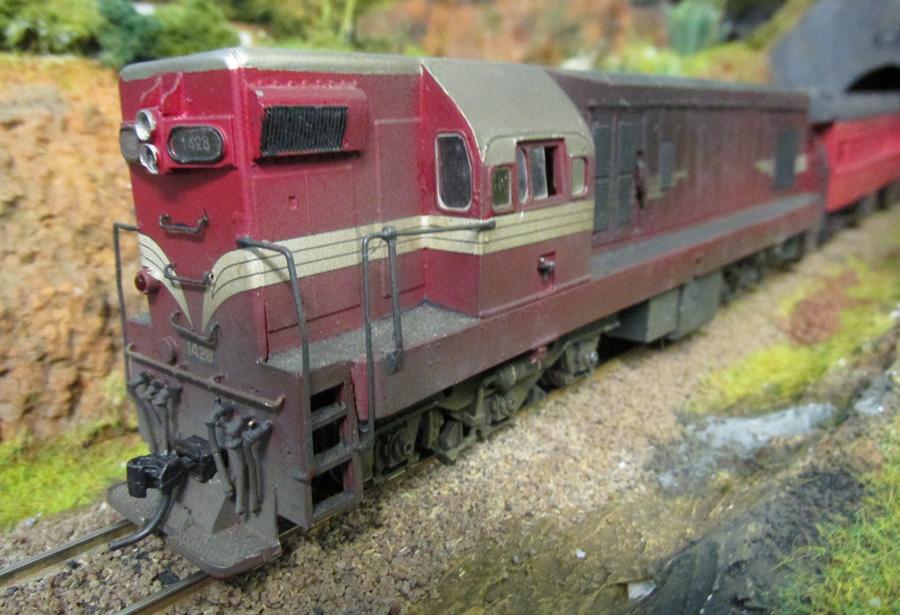
I stepped back about 30 cm and took this shot. Obviously the layout facia ruins the photograph.

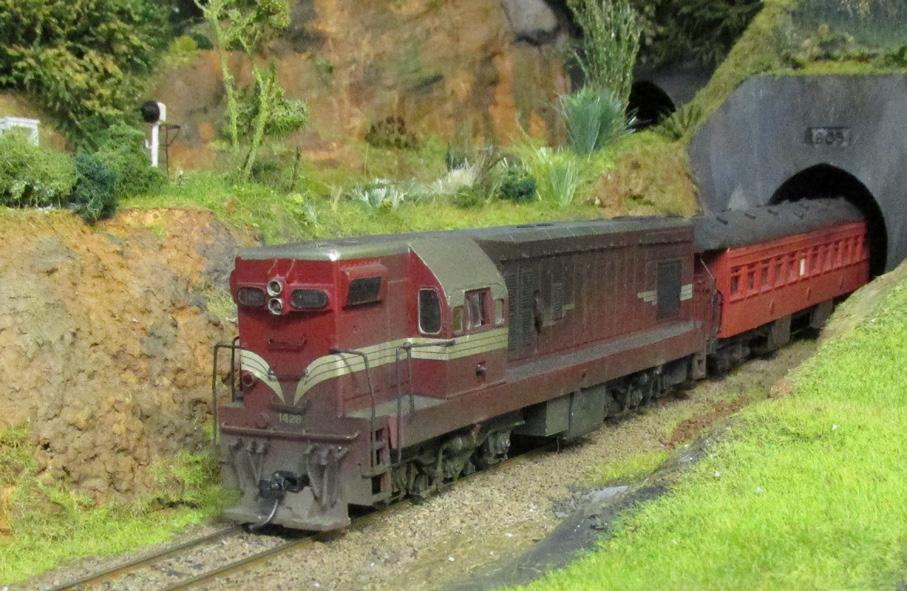
Don’t use the viewing program to save or rename the files if in JPEG format as most picture editor programs compress JPEG files each time it is saved accumulatively reducing the quality. Rename the photos in the file folder you used to save the photos, usually by using the right click on your mouse and then clicking on “Rename”. Use a sensible name such “Subject Photo 1” and so on and include the photo reference with suitable captions at the end of your article. Send the original photograph and leave cropping to me (your editor). Cover photos should be taken in using portrait (vertical) format, with the subject matter in the lower two thirds and a good background on the top third for the Journal banner and other information. Keep in mind that cover photos are usually reserved for the feature article and there are only four covers per year.Good photos for ‘Jewels’ and the back cover are welcome. I cropped photo 2 and this is the result the locomotive, carriage and background are now in focus. The photos were taken with my $189 Canon SX170-IS, 16M pixel camera.
Finishing your article Reference the photographs at the end of the article and write their captions alongside. Use your spell checker and the leave the article for a few days and read it again, edit it and repeat again after a few more days. Have a friend read it; another person’s critique can help. Email the article to me and if I see minor errors, such as spelling, I will correct these but will not rewrite the article, as has happened in the past, after all it is your words not mine. If I need clarification I will contact you.
Email me the final article and photographs. nzmrj_editor@xtra.co.nz
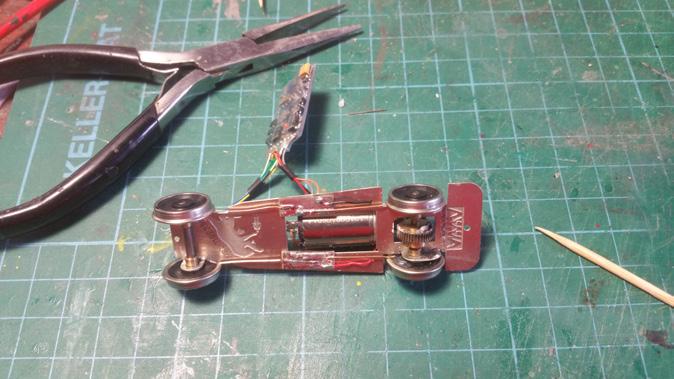
Need I say more. This photos lighting came from indirect sunlight through an adjacent window and overhead work lamp fitted with a compact fluorescent lamp, (CFL).
Coming events for NZ modellers
6–7 Oct 2018 The BIG Model Train Show. Pioneer Stadium, Lyttleton Street, Christchurch.
20–22 Oct 2018 Model Railway Exhibition. Hamilton Gardens Pavilion, Cobham Drive (SH1), Hamilton.
28 Oct 2018 Auckland NZR Modellers Day. Birkenhead Scout Hall Recreation Drive, Birkenhead. See below.
11 Nov 2018 Collectors Toy & Model Fair. Mt Eden War Memorial Hall, 487 Dominion Road, Balmoral, Auckland. www.acmrc.org.nz email newmilns@xtra.co.nz
9–12 Nov 2018 Pokaka Cultural Convention. Taylor Memorial Lodge, State Highway 4, Pokaka (Milepost 333). Email nzrmodeling@yahoo.co.nz for information.
24-25 Nov 2018 RailEx Model Train Show. Walter Nash Centre Lower Hutt. @facebook.comRailExNZ
2 Dec 2018 Auckland NZR Modellers Day, Birkenhead Scout Hall, Recreation Drive, Birkenhead. See below.
11-13 Jan 2019 Tauranga Model Railway Club Annual Show, Mount Maunganui College Hall. email - rob.thomson@kinect.co.nz
10-13 Apr 2020 NZAMRC Convention, St Andrew's College, 347 Papanui Rd, Strowan, Christchurch 8052, email sd90mach@gmail.com for details.
Auckland NZR Modellers Days. Reminders will be posted on the Guild Face Book page. Contact Pete van Grinsven petevang@xtra.co.nz
If you’re organising an exhibition, meeting or other gathering open to NZ modellers write to PO Box 180116, Royal Heights, Auckland 0656 or email <secretary@nzmrg. org.nz> to have it included here. There is no charge for this service. Details must be with the publishers at least three months before the date of the event.
Same subject and location except with a couple of sheets of A4 printer paper. The overhead light casts a fairly strong shadow and may have been better turned off, but I left it on to show for a direct comparison.

In Passing DUNN, Edwin Dacre (Ed). Ed was born on 5th May 1931 in Westport, the son of an NZR fitter. He passed away peacefully at home in Otaki on the 12th of June, 2018. Although best-known for his 1:87, 1:48 and 1:22.5 American modelling, he also modelled NZR in 1:34 scale during the 1980s. Ed joined the Guild in 1957 (member 249) and his modelling was featured in the Journal on a number of occasions. Ed was Chief Financial Officer for New Zealand Railway Corporation for several years.
Passed away peacefully on Wednesday 13th June 2018 at the Moxon Centre, Cambridge, in his 88th year. Colin began building NZR models about 1966. As he was not a railway man, Colin based his models on what he had seen in the Waikato and Bay of Plenty in the 1960’s. Always a fastidious modeller, Colin numbered and lettered his locomotives and rolling stock correctly and applied appropriate weathering. Also, his rolling stock was revenue earning and seldom without a load of some description. Modelling in these early years when there were few resources available, most of Colin’s fleet of locomotives and rollingstock was scratch built. The three locomotives shown here were all scratch built from his own photoengravings. These started as large flat sheets of zinc with the detail, rivets, boiler bands etc., engraved on. The pieces then had to be cut out, shaped and assembled – a very time-consuming process. The end results however, were exceptional. Wanting the correct numbers for the locomotives he built, Colin started producing his own etched plates. He soon became well known for this and for many years was the go-to person for NZR locomotive number and maker’s plates as he had the number for every locomotive that was ever in service. To this he soon added coach class numbers and locomotive numbers for illuminated headlights and number boards. The method he used was to make a large drawing and then arrange for a photographic negative to be made. This was then reduced to scale by a printers plate maker and etched onto zinc or brass sheet. The locomotive headlight number “glass” plates were made from photographic negatives. If you have a model NZR kit more than a few years old then most likely it will contain McHarg plates. Colin also produced etches for some rolling stock such as tank wagons which were difficult to model accurately by other methods. All together he built some very nice NZR models and these featured in the Journal on a number of occasions and won several awards at the National Model Railway Conventions. Colin was a long-standing member of the Hamilton Model Railroaders club (HMR) and a staunch supporter of their exhibitions. From the late 1980’s when HMR built their NZR modular layout, Colin’s locomotives and rolling stock were always star attractions. His rakes of J and H wagons were always carrying stock and has Whakatane Board Mills Fa was always a feature of the sawmill scene. Another crowd pleaser was his ‘Rotorua Express’ usually pulled by a K locomotive. All naturally, were scratch built from his own engravings. Colin was always a gentleman, he showed immense patience and was never heard to use anything other than the Queens English or to utter a disparaging word about anyone. Until he retired Colin was Deputy Headmaster and a science teacher at Cambridge High School. He was a member of the Territorial Air Force and Piper in the RNZAF Base Te Rapa Pipe Band. He is survived by his wife Joan and three children Ian, Jenny and Kirsten. Colin McHarg 10 February 1945 – 13 June 2018
Joan McHarg and Trevor James
Ab 733 The last steam engine to work on the Cambridge Branch Line (June 1967). Colin built this model in the early 1970’s but after much running at shows, it was later rebuilt onto an ONLINE chassis.
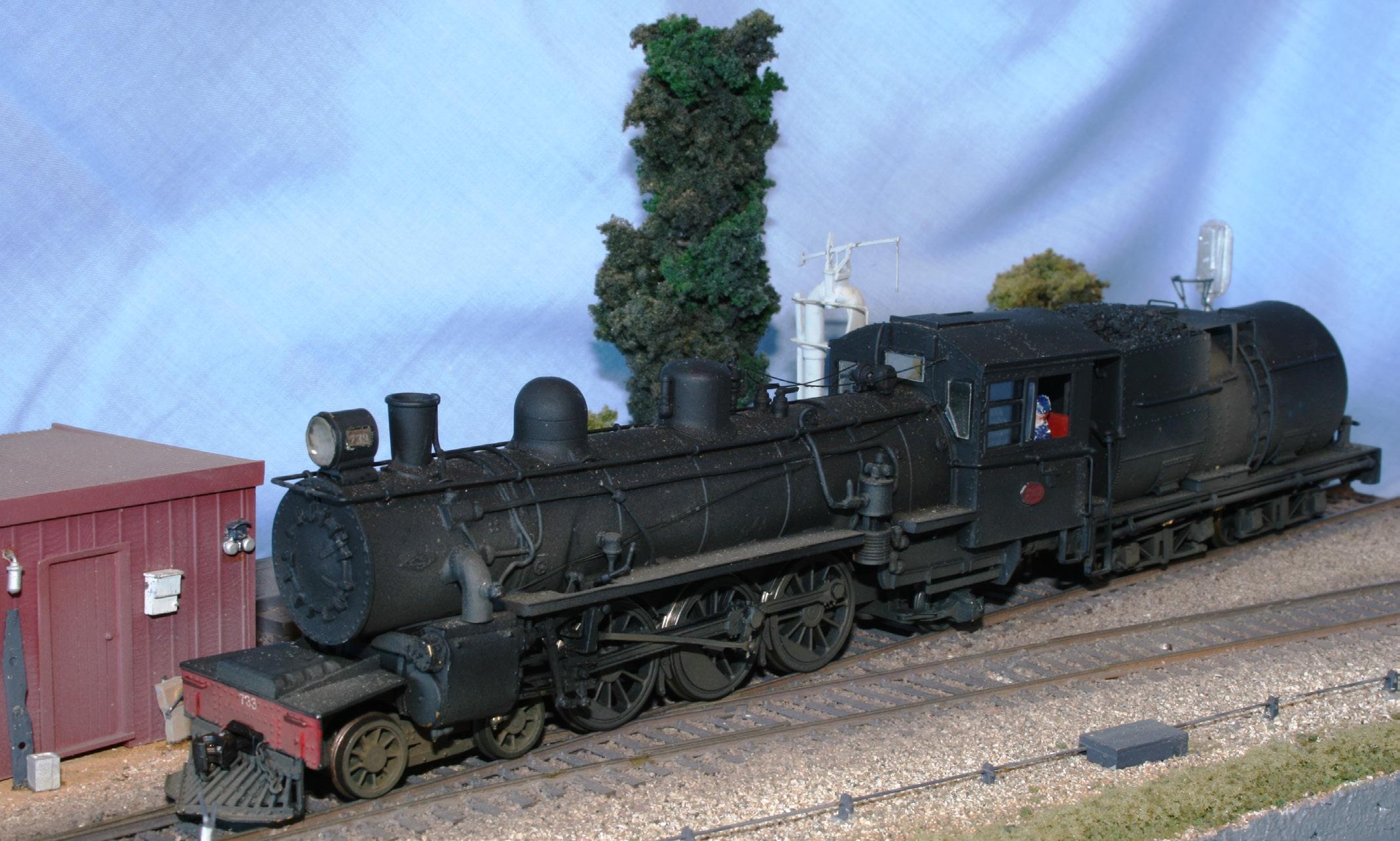
Your narrow gauge specialist magazine...
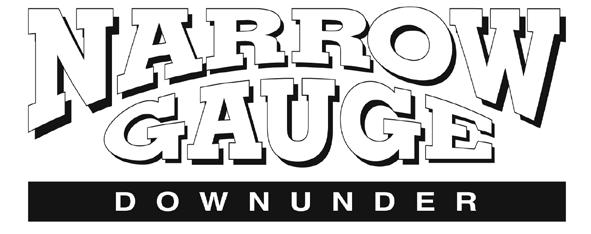
Narrow Gauge Downunder is Australia’s specialist narrow gauge magazine. We are devoted entirely to narrow gauge railways of interest for the prototype enthusiast and model builder. Each quarterly full-colour issue features detailed scale drawings of locomotives and structures; layout tours; modelling techniques; prototype stories and product reviews.
Since 1996 the magazine has achieved a proud reputation for top-drawer modelling and prototype articles, presented with quality production. Our aim is to inspire you - with great narrow gauge layouts & models; how-to techniques by leading modellers; detailed prototype & structure plans and more.
If you haven’t yet sampled Narrow Gauge Downunder, contact us today! Subscribe on-line with secure payment via Paypal; or contact us direct.
25 Dwyer St, Clifton Hill 3068 Australia web: www.narrowgaugedownunder.com email: mail@narrowgaugedownunder.com
New Zealand RAIL SCENE FREE 60 minute DVD
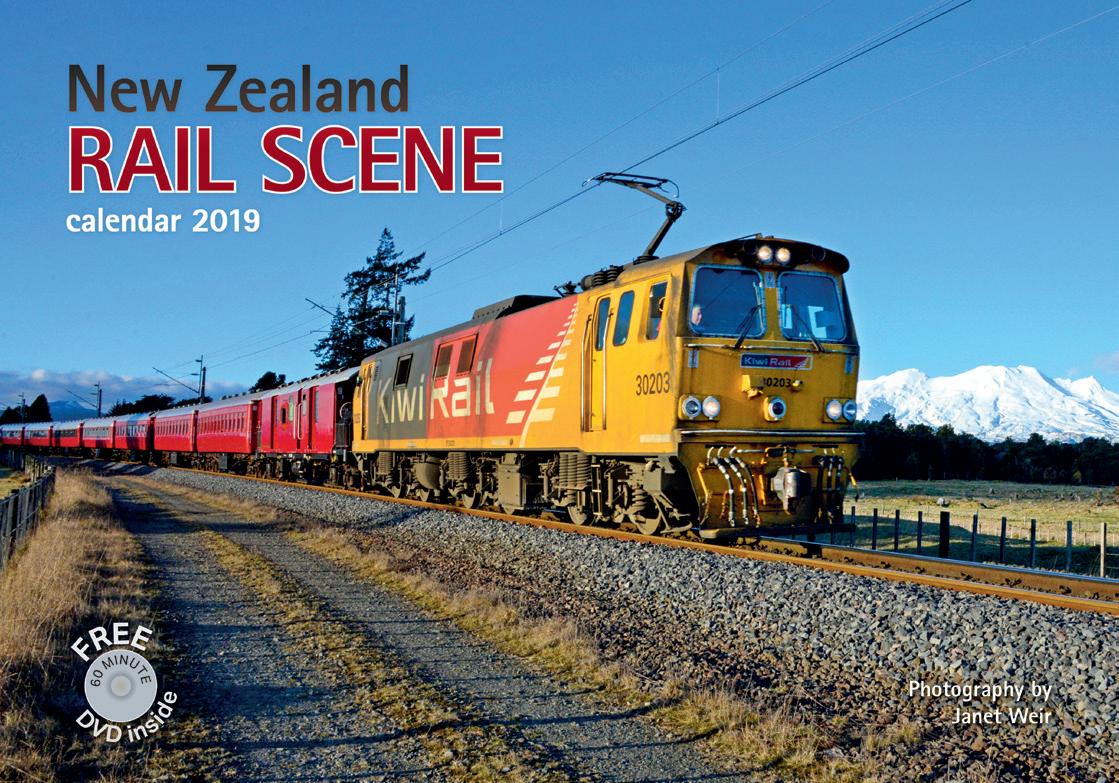
2019 Large Format Wall Calendar 12 COLOUR IMAGES $28.00 each including P&P within NZ $NZ34.00 each including P&P to Australia $NZ42.00 each including P&P to other Countries MAJIK VIDEO SYSTEMS P O Box 15, Westpark Marina West Harbour, Auckland 0661, New Zealand
A Layout Design service ... With your needs in mind! Modules - Boards - Bedrooms - Garages - Sheds - Basements - Club Layouts Plans and Lists of Materials for All Gauges Planning Services Track

Plans for the finest layouts
+614 2740 0755 greybee@optusnet.com.au Phone us or email your number and we will call you! Graeme BARNES

------ As New Zealand Railways pushed the rail network about New Zealand, opening up new country for development, a challenge presented itself to house railwaymen in country areas where infrastructure didn’t exist or was newly formed. Railways only alternative was to construct houses for their employees. Initially part of the Public Works Department responsibilities, eventually an Architectural Branch within New Zealand Railways was formed under George Troup. This development lead to new designs of railway houses, a design that was to become symbolic in the New Zealand landscape. To manufacture these houses, Railways set up a sawmill and special factory in Frankton, kit-setting houses, delivering them by rail as parts packs and ultimately erecting them about the country. As well as far-flung reaches of the railway system, Railways ended up developing “model” railway settlements at places as diverse as Otahuhu, Newmarket, Frankton, TeKuiti, Taumarunui, Ohakune, Taihape, Palmerston North, Napier, Eastown, Kaiwharawhara, Christchurch, Arthur’s Pass, Otira, Dunedin and other places around the country. The book closes with Government’s exit from railway house ownership in the 1990s and a chapter on the railway house survivors. Complementing the text is a lavish selection of black and white and colour images from the era and current day. Railway houses and the nearby railway environment are extensively featured. RAILWAY HOUSES OF NEW ZEALAND
Landscape format, 72 black and white and 84 colour illustrations, 16 diagrams, 142 pages, hardbound. Posted free to your door.
Available direct from NZ Ra il way & Locomo ti ve Soc i e t y I nc . 1A No rt h S tr ee t, Pe t one , Lowe r Hu tt, 5012 Or email nzrls.books@actrix.co.nz with your name, address, Guild membership number and credit card details RRP $49.00 NZMRG MEMBER PRICE $39.00 split over 2 emails.
New Zealand Railway & LocomotiveSociety Inc.
The NZ Railway Observer is published every two months. Packed full of interesting articles covering the steam days of NZR, bush and industrial railways, through to today, this fullcolour magazine is available on subscription and can be shipped to your mailbox for NZ$63 per calendar year. E-mail us or seeour website. $65
AsPublishers of high-quality railway books on New Zealand rail transport, we have in stock a large number of books at generous member discounts. Seeour websit e for a detailed listing.
Our Archive hasone the largest holdings of New Zealand railway material. Research facilities are available to members persuing specific areas of interest. Please contact our Archivist for details.
Sponsors of the Thomas McGavin Research Grant,this grant is available to cover expenses incurred during research and is open to everyone.
Contact us at – nzrls@actrix.co.nz www.railsoc.org.nz Phone (04) 568 4938
NZ Railway & LocomotiveSociety Inc 1A North Street, Petone Lower Hutt 5012 New Zealand
New Zealand RAILSCENE New Zealand Volume 94
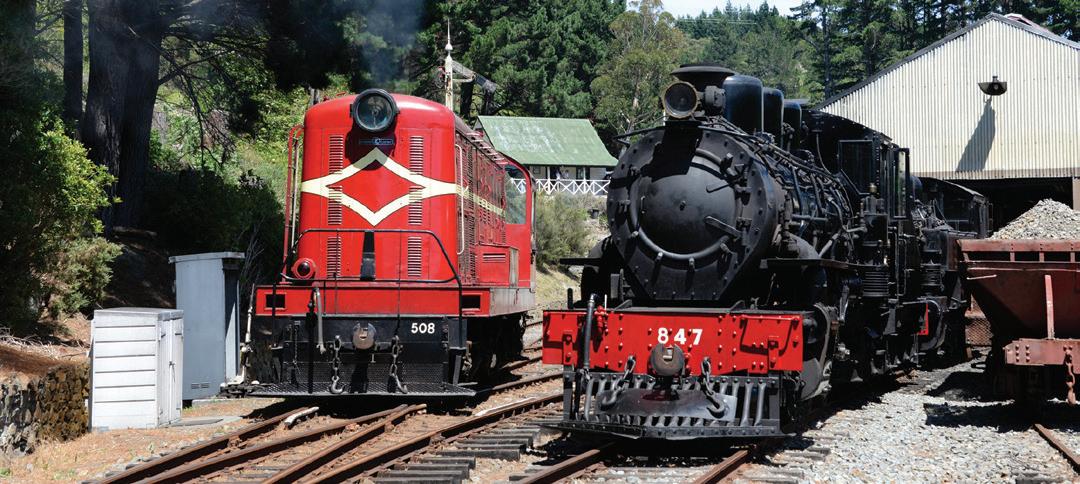
DVD’s $35.80 each plus $5.00 p&p Jb 1236 ‘Wanganui Vintage Weekend’ Silver Stream Railway 50th Celebration A b 608 ‘Marlborough Flyer’ 60 minutes of NZ RAILSCENE action NZ RAILSCENE covers KiwiRail operations in New Zealand, main line excursions, heritage railways, historical footage and special events. MAJIK VIDEO SYSTEMS P O Box 15, Westpark Marina West Harbour, Auckland 0661, New Zealand www.majikvideo.com
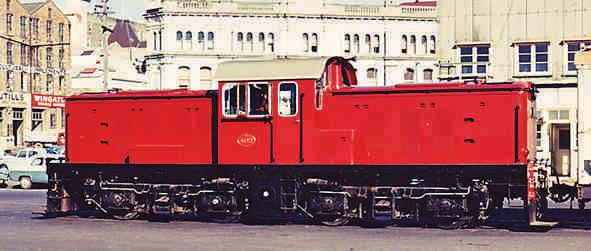

This DVD production covers over s eventy RES excursions from 1958 u ntil 2015.
Duration - 96 minutes
MAJIK VIDEO SYSTEMS
P O Box 1 5, Westpark Marina, W est Harbour, AUCKLAND 0661
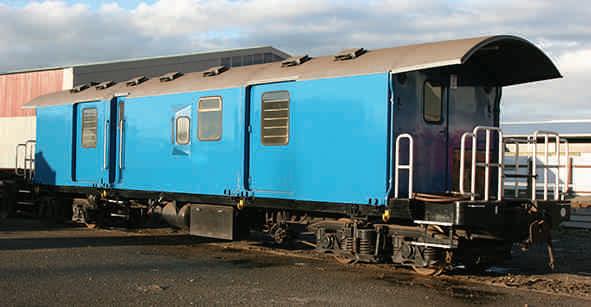
$25.00 plus $5.50 p & p
CROSS CREEK MODELS Sn3 1 ⁄ 2 NZR kits 29 Seymour Grove, Upper Hutt Carriages, wagons, Guards Vans Kit assembly available S.S.A.E. for details and price list to
GT Carter Transport Books * Rare & out of print books on railways & industrial history. * New Railway books. * Quality books bought & sold – single copies or libraries. * Free search for hard to get titles. Send A4 SAE for current catalogue. 16 Cambridge St, Wanganui. Telephone 0-6-344 4764 Facsimile 0-6-344 4732 e-mail gtcarter@clear.net.nz website www.gtcarterbooks.co.nz
T H E
G U I L D
G U I L D
EST 1947
W E B S I T E
T h e N Z M o de l Ra i l w a y G u i l d h i g h l y fe a tu re d
i n te ra c ti v e w e b s i te i s p ro v i n g a h i t w i th m e m b e rs
a n d o th e rs i n te re s te d i n th e h o b b y, i n N e w Z e a l a n d a n d
a ro u n d th e w o rl d. J o i n u s n o w a t w w w. n z m rg . o rg . n z
F e a tu re s o f th e G u i l d w e b s i te i n c l u de :
• P e rs o n a l l o g i n fo r m e m b e rs
• Au to m a ti c 2 0 % di s c o u n t fo r m e m b e rs w h e n l o g g e d o n
• O n l i n e s u b s c ri p ti o n re n e w a l s w i th fu l l y s e c u re p a y m e n t s e rv i c e s
• O n l i n e s h o p o ffe ri n g :
J o u rn a l b a c k i s s u e s fo r y o u r re fe re n c e a n d c o l l e c ti o n
N e w ra n g e o f C e dri c G re e n p l a n s i n B & W

a n d a s b l u e p ri n t re p l i c a s
C o m p l e te ra n g e o f G u i l d s tru c tu re p l a n s e ts
Tra di ti o n a l ra n g e o f w a g o n p l a n s
H i g h qu a l i ty b i n de rs fo r y o u r J o u rn a l s a n d
fo r y o u r C e dri c G re e n p l a n s
• P h o to g a l l e ri e s i n c l u di n g a ddi ti o n a l p h o to g ra p h s s u p p o rti n g
J o u rn a l a rti c l e s
• S p e c i a l m e m b e r s o n l y a re a fo r de ta i l e d i n fo rm a ti o n a n d p h o to g ra p h s fo r J o u rn a l p l a n s
• L i n ks to o u r s u s ta i n i n g a dv e rti s e rs a n d to re ta i l e rs a n d m a n u fa c tu re rs .
Contact details are on the website for the Guild Executive and your Area Representative.
See the www.nzmrg.org.nz/HOME page for details on how to log on. Log on regularly as the site changes often.

A New Modelling Scale for NZR Prototypes
A Group of New Zealand Railway Modellers are developing this new New Zealand Modelling Scale to complement existing scales. As the name suggests, the scale is 1:48, or 1/4 of an inch to the foot, commonly known as O Scale (US). However, as the New Zealand Prototype uses a gauge of 3ft 6in, the scale track gauge is 22.23mm.
NZ48 fills a void between the current NZR prototype model scales, allowing good detail but still small enough to fit a reasonable layout in your average bedroom or garage. It also enjoys the huge advantage of being able to use the vast range of vehicles, figures and accessories already produced in 1:48 scale for model railroaders and doll-house miniature enthusiasts, plus shared opportunities with those currently modeling in the 1:48 scale of On30.
The aim is to work to Prototype fine scale standards. For those who wish to avail themselves of commercially available Flexi-Track, Points, Track Gauges, etc, Standard “S” Scale runs on a track gauge of 22.42mm (only 0.19mm over scale for NZ48). Tests indicate it is feasible to run rolling stock to the NZ48 fine scale standard on standard S Scale track. The best of both worlds.
Further information is available in the December 2014 edition of the Journal
We are looking for Manufacturers and Modellers who are interested in helping us develop this scale as a viable option for NZ Modellers
If you are interested in helping, please contact:
Greg at krisalys@outlook.com, or Fergus at drydoc@xtra.co.nz
Or
Join us on the NZ48 Yahoo Group
NZ48 - NZR Prototype in “O” Fine Scale
Email; stationrd90@hotmail.com for list of kitsets and accessories
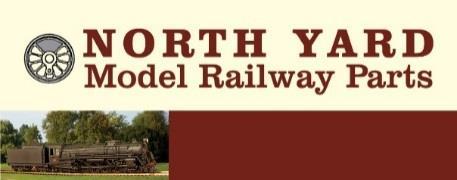
P O Box 402, BLENHEIM 7240 Email: northyard@xtra.co.nz Web: www.northyard.co.nz
NORTH YARD
MECHANISMS
NZR 3/16 (1:64)

Contact us for RTR Mechanisms
STOCKISTS OF:
North Yard Gearboxes Wheels and wheelsets NZR Colour Matched Paints (available within New Zealand only) NZR Brass Bogie Kits, Sn3.5 Brass Detail Parts 1:64 NZR Couplers & Hooks Miniature Screws, washers, nuts, spacers, springs, etc. Miniature drill bits and other small hardware Brass wire, rod, tube, square, etc. Low melt solder Brass Chain & mesh Etched Brass, Nickel Silver Sheet Phosphor bronze wire And much more, INCLUDING…
SOUTH DOCK MODEL KITS Freight wagons, stock wagons, Heritage series, Guards Vans, Coal wagons, Passenger cars, etc.
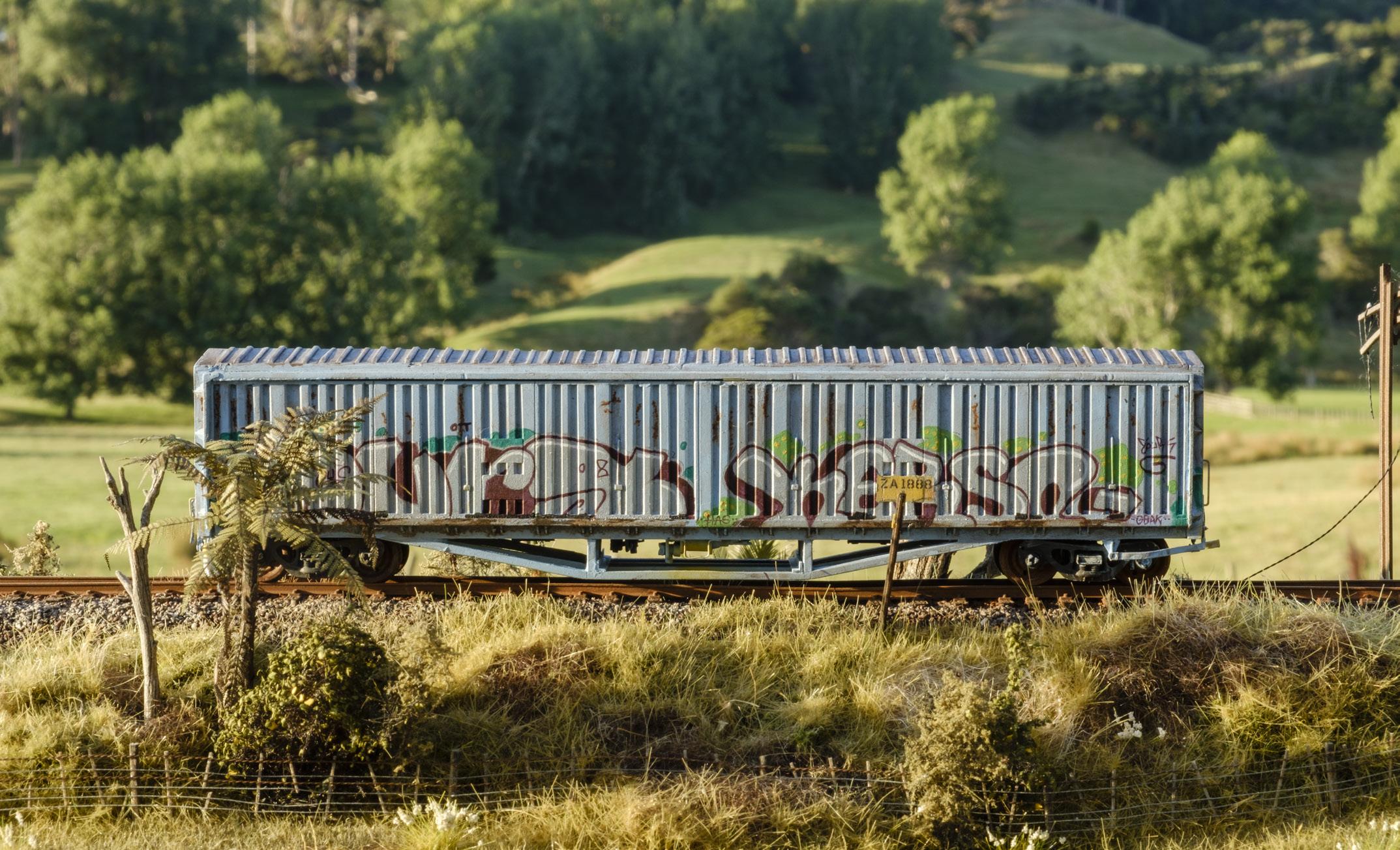
Mike Steenhuisen is a master at painting wagons of the more recent era, which of course includes graffiti. Both of these models were created using photographs of the real thing. Maybe there is some merit in true Graffiti art work. Top A Zp wagon on his North Auckland Line module, that featured in the June 2018 issue of the Journal. Below. Another fine example of Mikes work.
